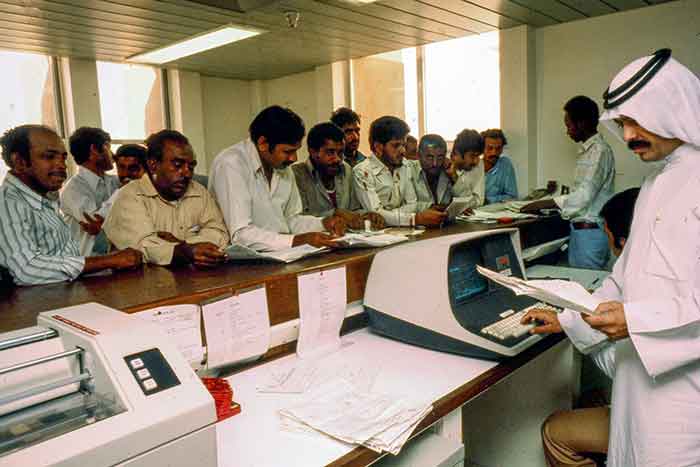
Dubai Port Services - In the Beginning
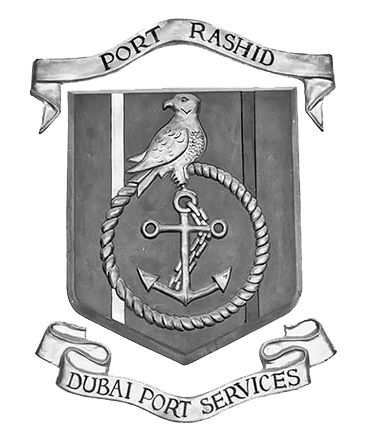
Critical part of Sheikh Rashid's Vision for Dubai's Development Plan was building a deepwater port. Initially conceived as a 4 Berth Port, Sheikh Rashid soon wanted a larger port to accommodate more ships. Final design was 15 Berths with construction beginning in 1967.
Sheikh Rashid decided Port Rashid should be operated and managed by a Commercial Company as he saw this as efficient. Gray Mackenzie and Company had, for many years, advised Sheikh Rashid on marine matters and were asked to take on the management and operation of Port Rashid.
Gray Mackenzie's parent company Inchcape Group, based in London, was reluctant as Inchcape had no experience of Port Management.
Eventually Inchcape recognised the significance of Port Rashid's role and agreed to establish Dubai Port Services for the sole purpose of operating and managing Port Rashid.
Sheikh Rashid issued his Decree formally establishing DPS and immediately encountered resistance in his Majlis to DPS's appointment.
For nearly a year various local interests vied to replace DPS with their own Companies.
But Sheikh Rashid stood by his original decision. DPS came into existence with complete responsibility for operating and managing Port Rashid as a profitable commercial enterprise with Sheikh Rashid taking 40% of profits.
Dubai Government had no direct role in Port Rashid's operation and management although DPS developed close links with Government Finance, Customs, Immigration and Security Departments.
DPS purchased all Dubai Customs Department Plant used at the Dubai Creek Cargo Wharves and absorbed Customs Department Staff working at Dubai Creek Wharves.
DPS also purchased new plant and equipment and recruited management and operational staff from UK, East Africa and the Gulf.
Dubai Port Services began operations at Port Rashid in 1971.
Dubai 1970s - New Boom with Old Habits
Dubai was a Boom Town in the early 1970s.
Cargoes flowed into Port Rashid in ever increasing amounts - but old Habits started to cause problems
Sheikh Rashid had dictated the terms of Port Rashid's Tariff
His Tariff provided favourable terms for Dubai's Merchants with extended period of free storage and low penalty rates for those Merchants that failed to clear their goods from the Port.
Dubai's Merchants had not invested in storage preferring to leave their goods with Dubai Customs until they needed them. That arrangement worked while there was space available and cargo inflows were low. Now the situation was totally different.
Sheikh Rashid resolved the problem by agreeing to change Port Rashid's Tariff. Free storage periods were drastically cut and penalty rates for uncleared cargoes raised to punitive levels. At the same time Sheikh Rashid ordered low cost storage facilities to be built outside Port Rashid on Al Mina Street. Merchants could rent space at low cost as an incentive to moving their goods from Port Rashid.

Gulf Boom and nearly Bust
Port Rashid was now able to cope with incoming cargoes.
Other Gulf Countries were also experiencing the Oil Boom. Cargoes were flowing into their ports also - but slowly. Many of these Ports were poorly equipped and managed. Shipping lines began to separate cargo for each port and stow in separate holds. For example: No 1 Hold could be cargo of Kuwait, No 2 for Bahrain, No 3 for Damman etc.
For that system to work a ship had to book into every Gulf Port for which they had cargo then find somewhere to wait until a Port told them a berth was available. Dubai became that waiting place. At one stage over 200 ships were berthed off Port Rashid either waiting to berth at Port Rashid or another Gulf Port. Average wait time was four months.
Port Rashid's management and the shipping lines began to look for ways around this problem.
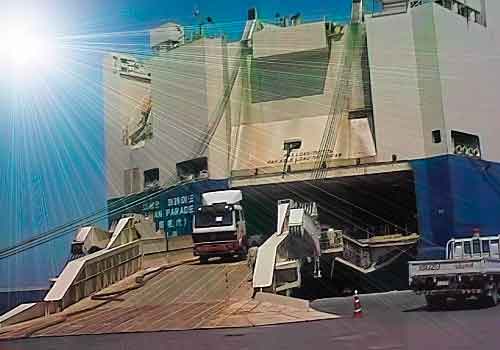
First solution was Roll On / Roll Off ships. They could berth "stern to" between berthed conventional ships and discharge their cargoes quickly.
Shipping Lines wanted to cut down their waiting time. They started carrying containers on deck that could be offloaded quickly. These ships came alongside in between regular ship departures and arrivals,
quickly discharged their hi value deck cargoes then return to anchor offshore to wait for their next berth.
Containers these lines used were old and redundant so Shipping Lines were able to abandon these Containers leaving the Port to dispose of them.
As this way of dealing with cargo became the norm, more shipping lines carried containers on deck and slowly the quality of these containers improved until the Shipping Lines started asking to have their Containers returned.
That meant Port Rashid had to store the Empty Containers until they could be returned taking up valuable storage space in meantime.
A Final Solution - Sort Of

DPS Management decided some form of container handing facility was needed. Halcrows and Partners were engaged to redesign Berth 10 to take two lightweight container cranes. DPS initially purchased one Leibherr Container Crane together with yard container handling equipment. Once these were installed and commissioned, Port Rashid was able to have a Berth dedicated to ships carrying containers.
Sealand Shipping were one of the first dedicated container carriers to call at Port Rashid. Sealand supplied a second Leibherr Container Crane for DPS's use so ship turnaround time improved dramatically.
As more Shipping Lines turned to Container Ships so the usage of Port Rashid's general cargoes berths declined.
The Final Solution
At the peak of Ships waiting outside Port Rashid, Sheikh Rashid ordered a further 19 General Cargo Berths to be constructed.
It was now obvious that design had to be changed to incorporate a purpose built Container Terminal to international standards. Sheikh Rashid agreed this change with the new Port Rashid Container Terminal completed in 1982.
After 1982, Port Rashid's throughput was primarily Container Traffic.
Many of Port Rashid's 30 general cargo berths together with their storage sheds and yards now lay empty and unused.
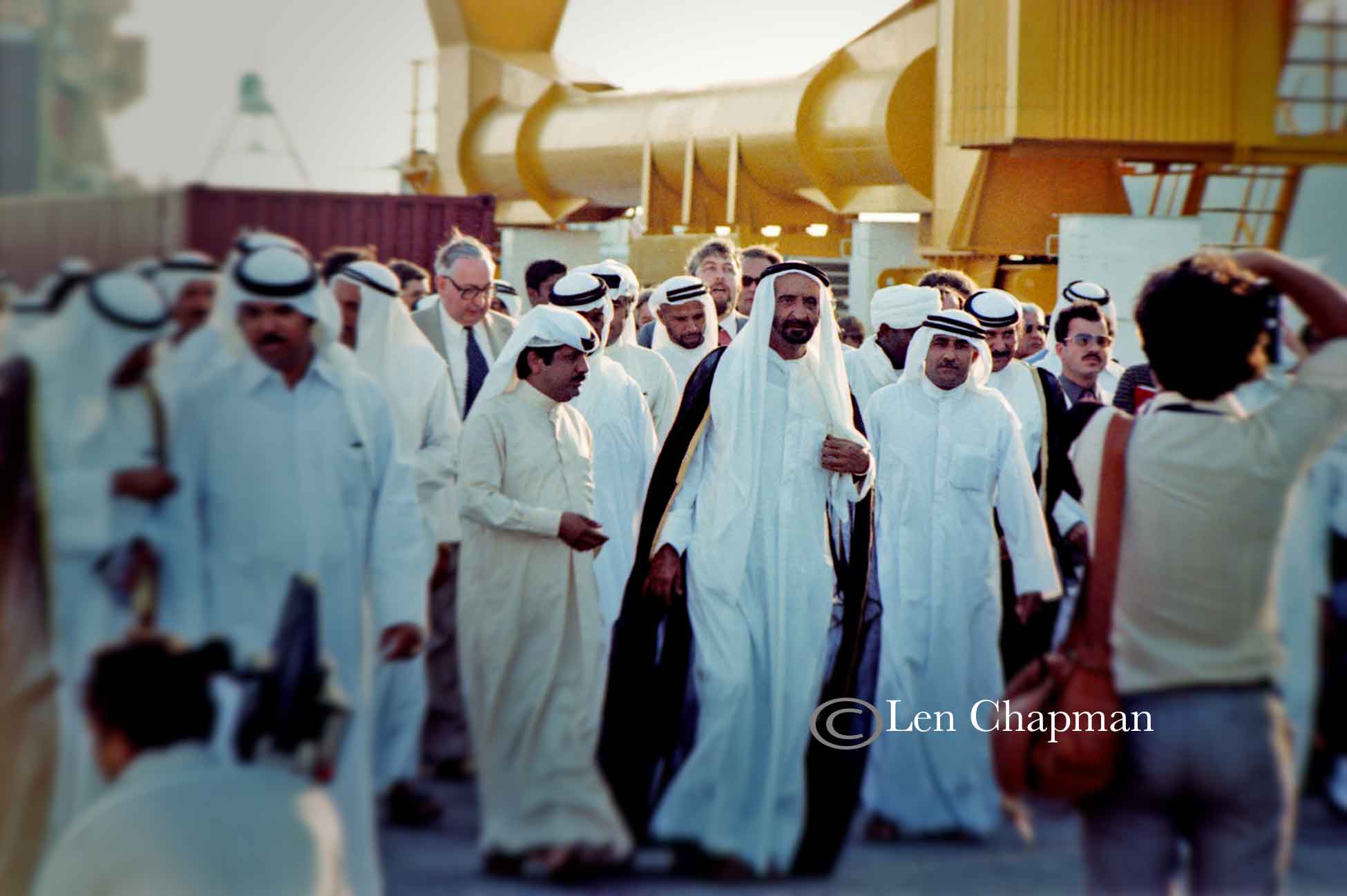
Sheikh Rashid bin Saeed Al Maktoum opens Port Rashid Container Terminal 1982
Technology takes over
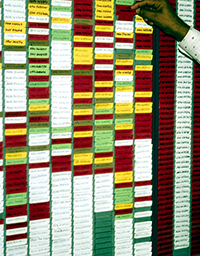
Efficient Container Operations depend on knowing exactly where each and every Shipping Container is located in the Terminal at any point in time. In the early days a simple card and index system was sufficient for this purpose but eventually became unable to cope as Container Traffic grew and container movements became more complex. Gray Mackenzie installed a Main Frame Computer in their Bur Dubai Office to deal with their accounts and sales management. This Computer had spare capacity so DPS came to an agreement to share this Computer. DPS set up their own IT Department and began developing software "In House" to manage Container Operations. This was a pioneering work in 1980s as Computerisation had yet to be applied to Port Operations anywhere in the World apart from Singapore, Hong Kong and some European Ports.
There was no Commercial Software available then so no option but for DPS but to adopt a "Do it Yourself" approach.
Changing Influences
Sheikh Rashid bin Saeed Al Maktoum became ill in May 1981 and no longer able to rule.
His influence and control over Government affairs quickly faded.
Old rivalries and opposition to a foreign company managing and operating Port Rashid resurfaced.
A difficult situation developed.
Sheikh Mohammed stepped in and negotiated a settlement.
Consequence was Dubai Port Services ceased to operate as an independent company.
Gray Mackenzie and Co. continued to operate Port Rashid as Port Rashid Authority.
PRA was never established as a formal Port Authority.
Dubai Government assumed management and financial control of Port Rashid.
That arrangement continued until 1991
In 1991 Dubai Government terminated both Jebel Ali Port Management contract with Sealand Shipping of USA and Gray Mackenzie and Co UK.fff
A new Government owned entity of Dubai Ports Authority was created to manage Port Rashid and Jebel Ali Ports as a single port.
Port Rashid closed for cargoes in 2008 to be developed as a Cruise Terminal and Residential Complex.
Dubai Port Services is a forgotten Company despite its critical role in Dubai's Development
CLICK IMAGE for More









